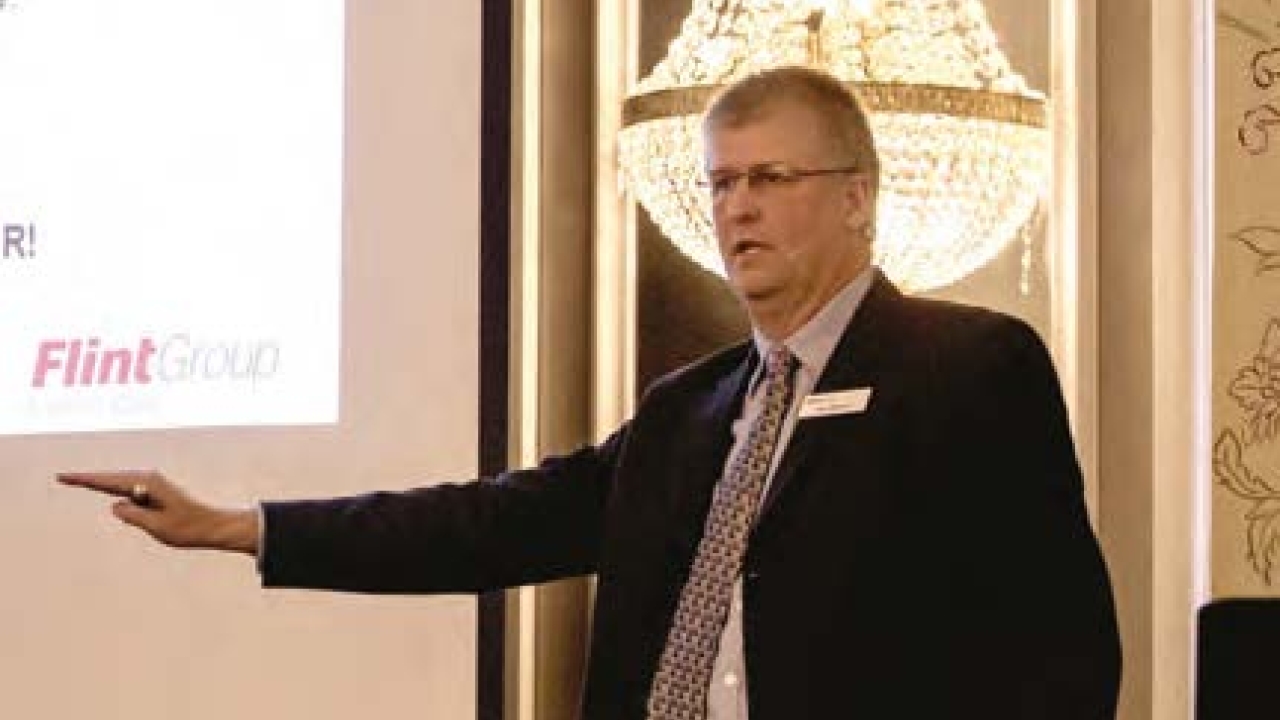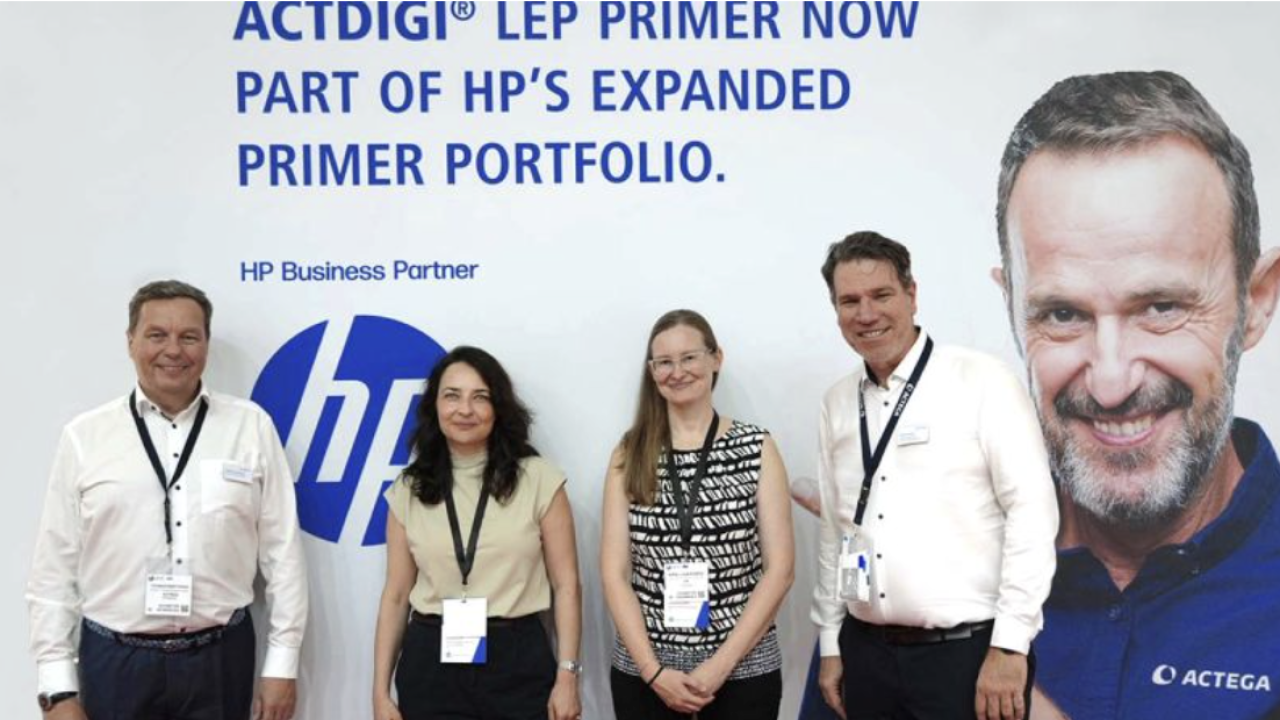Making narrow web fit-for-purpose

In the latter stages of 2014, Flint Group hosted a seminar looking at the future of the narrow web industry, with its partners and suppliers from across the label and package printing supply chain discussing a variety of topics that varied from migration and LED-UV inks to innovation in materials and opportunities presented to the label industry by new vertical markets, such as flexible packaging.
LED-UV was a big talking point across the two-day program, with suppliers and end users alike touching upon it. This included Constantia Flexibles and WS Packaging giving attendees a first-hand account of using LED-UV, and some of the benefits they have achieved. For Constantia, this has resulted in 50 and 65 percent run-speed improvements on flexo and white screen, with no discernible differences in opacity or ink yield, and lower power consumption than when curing using mercury systems.
A ‘hands-on’ element of the program saw delegates visit the Flint Group ink manufacturing facility in Trelleborg, and see a Nilpeter press that has been installed to allow the testing of new formulations for different narrow web applications, including LED-UV curable flexo, offset and screen inks.
Jakob Landberg, sales director at Nilpeter, outlined the importance of this R&D installation, which is the result of three years of work between it and Flint Group. The press features two offset units and three flexo stations, each of which can be individually configured so allowing specific ink formulations to be tested, and the press to be configured as a five-station screen or flexo press, or a customizable combination press. LED-UV lamps feature on each print station, with hot air drying another possibility to allow the development of water-based inks. ‘It has been specially designed with an open architecture to make it highly versatile,’ Landberg says.
In another important development for the future of narrow web, Flint Group’s Jennifer Joyce gave a detailed and technical explanation of what ‘low migration’ truly is. With low migration able to be defined in different ways, depending on the application and environment that cause different migration scenarios, Joyce made clear that in reality each application is unique in its own ways and so a ‘fit-for-purpose’ mentality is best deployed.
With the narrow web label market traditionally not seen as being heavily impacted by migration due to labels being applied to packaging types that offer an absolute barrier – glass, metal, etc – the increase in interest in flexible packaging as a route to growth means they must take a more engaged interest in migration.
Flexibles – pouches, bags, tubes – by their very nature are primary packaging so have a more direct relationship with the contents than a label on a bottle will, so the requirements for their technical specification are different and more complex. This rubs off on parties involved up and down the supply chain, whether inks, coatings or laminates, and their products, with Flint Group working to ensure its products are suitable for use in different packaging applications.
Anthony Berthelier, presenting on behalf of Jindal Films, said flexible packaging is a definite opportunity for the narrow web market, noting that those wanting to play in the flexible packaging space must pay close attention to requirements specific to these packaging types, especially for food, where the use of solvents is expected/required due to migration, and some materials specially designed for use with solvents.
‘You should make sure to converse with your suppliers to ensure the consumables you use are suitable for the application you are looking to serve, but also to remember that innovation is constant, so developments in UV might mean a change in the future.
‘End-user functionality is critical in packaging, and products must be fit-for-purpose, with barrier properties, seal properties and more very important, while they are generally not considered when producing labels. The interaction between inks, materials and coatings is also very complex and needs to be understood.’
Nilpter’s Landberg sees the future of the narrow web industry as having label printers and converters converting multiple substrates and packaging products, such as flexible packaging, shrink sleeves and labels. ‘More and more printers and converters are diversifying into other products, and tubes, stand-up pouches and shrink sleeves will become daily business for the narrow web market.’
Antoine Fady, chief executive officer at Flint Group, gave a broader perspective on the future of narrow web, from the impact emerging markets will have to the role suppliers play in advancing the opportunities for customers they serve.
Stay up to date
Subscribe to the free Label News newsletter and receive the latest content every week. We'll never share your email address.

